How to Thin Enamel Paint For Spray Gun?
All you might need to know about thinning enamel paint correctly
Enamel paints are known for the glossy finish they create once this paint dries fully on the surface. Besides, this type of paint is rather durable which makes it a preferred option for the majority of homeowners!
However, you might not want to apply enamel paint with the paintbrush, and thus, you might think of using a spray gun as a paint application tool. But in this case, you will definitely face a question: how to thin enamel paint correctly so that I don’t ruin it?
Enamel paints are rather thick as you know, so in order to get the desired finish, you will have to learn how to thin the paint correctly, and what products are best to be used for this purpose. In this article, you will find the answers to these questions in detail.
But also, we are going to explain what enamel paints are (for those who are not much aware of this), and also, we will provide you with some extra helpful and useful information on this subject.
How to Thin Enamel Paint For a Paint Sprayer?
Thinning enamel paint is hard to call a simple process. See, this type of paint can be thinned with several different products, so you need to know exactly how each of those products will affect the paint. Also, it is important to know what steps to take exactly to thin your paint correctly instead of ruining it.
So if your goal is to achieve a perfect finish when painting with a spray gun, below you can find a detailed guide on how this could be done. And remember the major rule of thumb: the paint material should have a consistency similar to that of milk!
In this case, you will get that awesome glossy finish that enamel paint is famous for!
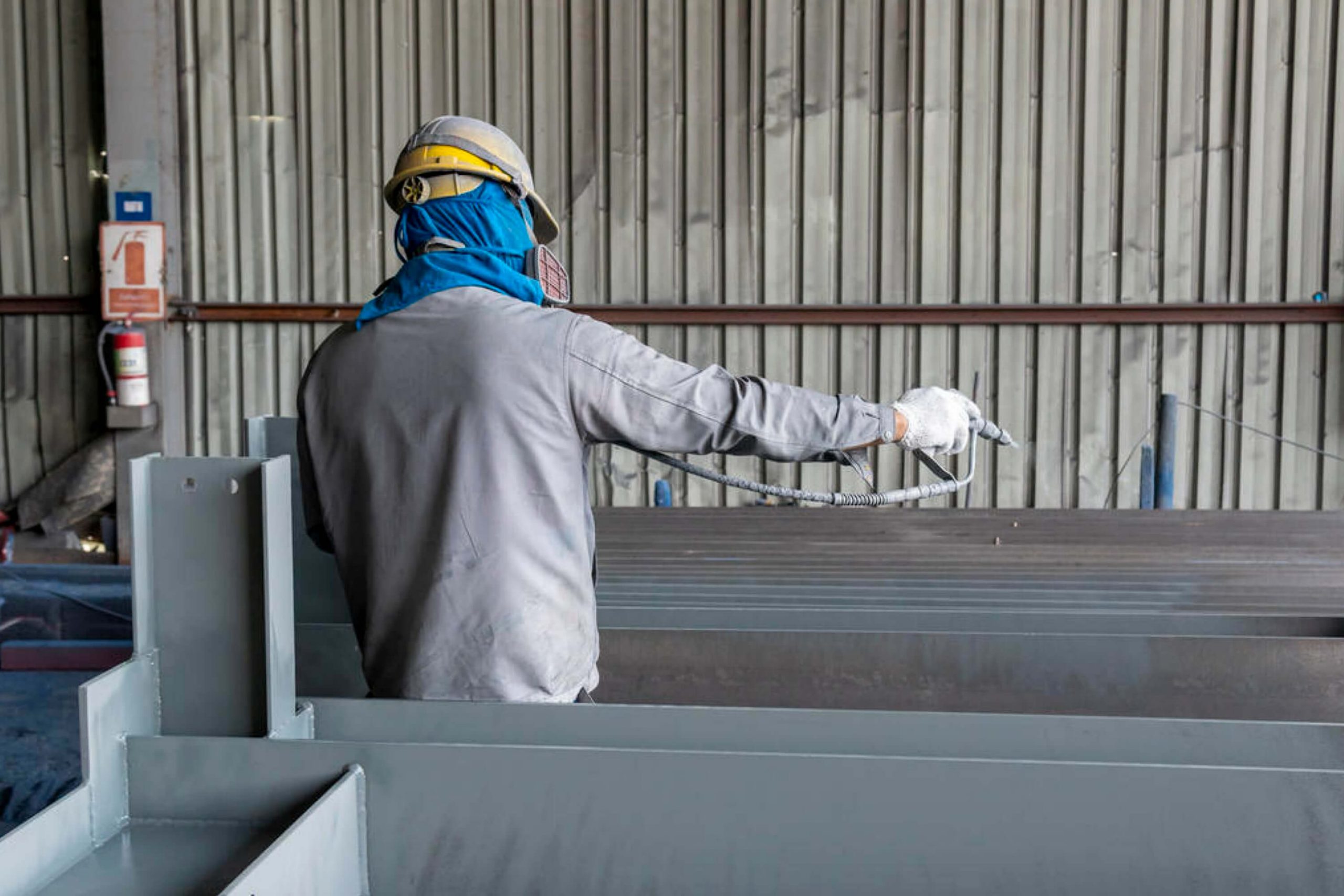
pong1986 via VistaCreate
Table of Contents
Protect Yourself First
When you are going to work with paint, it is important that you protect yourself first. See, quite many paints contain harmful chemicals that, when inhaled, may cause not quite pleasant aftermath! Headaches, nausea, and skin irritation are only the few that you can experience.
So wear your safety equipment before you proceed.

Safety goggles, a protective mask, and a pair of gloves are what you should always have at your disposal. In this case, no paint splatters or paint fumes would be harmful to you.
Check What Type Of Paint You Have
Before you start thinning the paint you have, you need to check what type of paint it is exactly. See, enamel paint can be of two major types. They are water-based paint and oil-based paint.
Depending on the type of base, you will have to use different thinning products and maybe even techniques!
What we suggest you do is confirm the type of enamel paint you are working with, whether it is water-based or oil-based. Once you find it out, check for the recommended type of paint thinner and the suggested ratio. Like this, you will definitely not screw up the process.
Stir the Paint to Get the Right Consistency
Before you start thinning it, your paint has to be stirred thoroughly. Like this, you will ensure that its consistency is of the proper state. Begin to stir and mix your paint to thin it to the needed consistency.
Simply pour the paint into an empty bucket. We also recommend you use a paint strainer while pouring the paint. It will allow you to ensure that there are no lumps of paint at the bottom of a can.

ubrimo via VistaCreate
Start the Thinning Procedure
After you mixed the paint and ensured that it has no lumps, you can begin the thinning process. Mix the paint with the paint thinner you have prepared, based on the paint type you have.
The ratio of paint and thinner will depend on the type of paint and the type of thinner you are going to use. In order to avoid making a big mess, we recommend you start with a 1/3 thinner to paint ratio.
Make a Test
Even if you used the right ratio of paint and thinner, you still need to test the thinned paint you now have. Like this, you will see how well it adheres to the surface, what consistency it has after application, and how it dries (meaning what finish you will get in the end).
For that purpose, you need to get a test surface. Usually, cardboard or any other disposable surface will be just fine. Once you have it, just test your thinned paint by applying it with a sprayer.
If you see the paint sprays evenly and it comes out of the spray gun easily, your paint is thinned correctly and you can proceed with painting the surface you need.
But if the paint doesn’t come out well or it doesn’t spray evenly, you should probably increase the thinner ratio. The safest option would be to keep on thinning until you achieve a 1/2 thinner to paint ratio. Afterward, go through the testing process again.
What If It Didn’t Work?
If there is still no perfect ratio, you can keep going until you get to a 2/3 thinner to paint ratio. However, we would not recommend you go beyond a 2/3 ratio! In this case, the paint will probably be way too thin, and you risk losing your paint and making it completely useless.
Like this, now you have a full and detailed guide on how to thin enamel paint correctly if you need to apply it with a spray gun. As you can see, the process is basically not difficult.
It’s just the ratio of paint and thinner that might make your eye twitch a bit! But once you reach perfection at that, thinning paint will hardly be an issue for you again.

pong1986 via VistaCreate
Things You Should Avoid Doing When Thinning Enamel Paint
When there are dos, there are also certain don’ts. When it comes to thining enamel paint for spraying, you need to know what not to do.
This is almost as important as being aware of what should be done! So here we have prepared a few points for you on what you should be avoiding when undergoing the enamel paint thinning process.
Avoid Thinning Too Much!
Yes, this can happen and will happen if you’re not careful. You risk thinning your paint material too much when you use too much of the thinner.
If you let this happen, the enamel paint becomes too runny. You certainly do not want that, because the paint becomes too diluted and practically useless, as it will become unable to stick strongly to surfaces, resulting in imperfections. Luckily, there are only two of them.
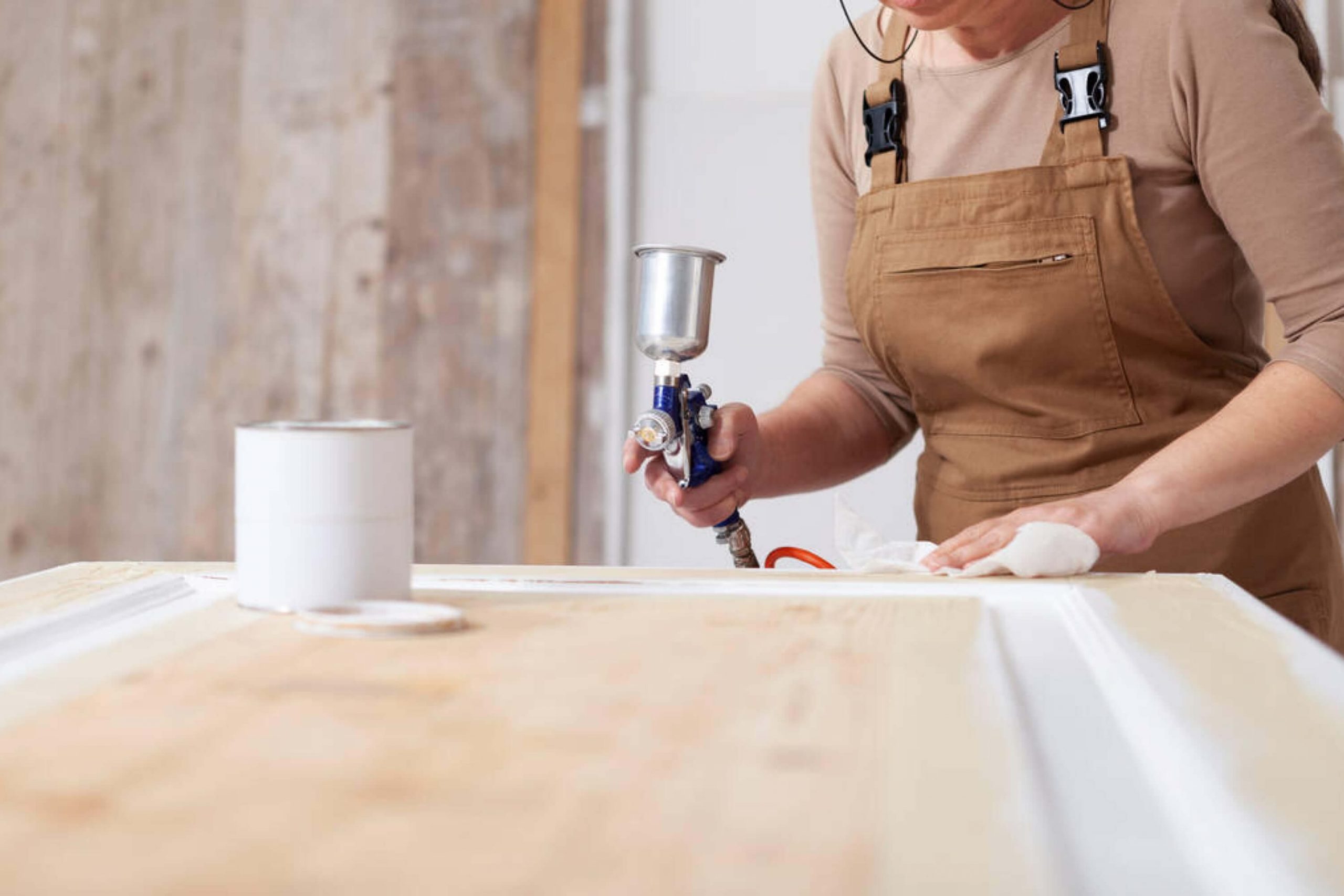
amedeoemaja via VistaCreate
Avoid Using the Wrong Thinner!
The wrong thinner can ruin everything: your paint, the surface, and your mood. So you need to keep in mind a simple rule of thumb: generally, latex and acrylic paints are thinned with water. Enamel and/or oil-based paints are thinned with either mineral spirits or turpentine.
This is why it is vitally important that you always double-check that the paint material you are working with can actually be thinned! See, there are some paints that don’t need to be thinned at all!
With these tips, it will be simpler for you to avoid any unexpected and unwanted effects on your walls after you apply the improperly thinned paint to them.

Why Is It Important to Thin Enamel Paint?
This is the question that quite many homeowners ask when they decide to use enamel paint, especially if they are doing this for the first time. In fact, the answer is simple and we would even say, obvious. Enamel paint is rather thick in comparison to other types of paint that are on the market.
The thinning process is needed for ensuring that the enamel paint is in a proper state and has a proper consistency to be delivered through the spray gun.
As you surely understand, spraying thick materials through a paint sprayer is not exactly the smartest thing one can do. This is why it is recommended to perform the thinning process on enamel paint.

22rus83 via VistaCreate
What Are The Best Enamel Paint Thinners?
When you need to thin the enamel paint you have to apply it later, you definitely want to know for sure what thinning products exactly will be the most suitable for you.
And since we know how puzzling it can feel to try and figure out which one to use and what effect it might have, below we have prepared a list of such thinners for you.
Here are the best enamel paint thinners:
- Methylated spirits
- White spirits
- Turpentine
- Mineral spirits
- Acetone
- Lacquer thinner
- Rubbing alcohol
If you use these chemicals, mix them in the right proportions first of all. And also, make sure you are wearing the proper protective equipment!
It is essential if you want to avoid direct contact with your skin, as well as avoid any exposure to toxic fumes.

borodai.andrii via VistaCreate
What Is Enamel Paint?
Since you are reading this, you definitely think about using enamel paint in your home. Respectively, it is a good idea to find out what this paint actually is!
Like this, you will be able to understand its specifics better and thus you will easily decide whether or not this paint is what you are looking for.
Enamel paint is initially an oil-based paint. When it air-dries, it turns into a hard, glossy, glass-like finish that people adore so much. This is the reason why this paint got its name in fact: the finish it creates reminds of enamel.
Nowadays, however, you can also find water-based enamel paints on the market.
Enamel paint is available in many colors and textures, for example:
- High gloss
- Gloss
- Semi-gloss
- Eggshell
- Satin
Basically, in terms of texture, this paint is the same as any other interior paint. This is why enamels are so highly popular.
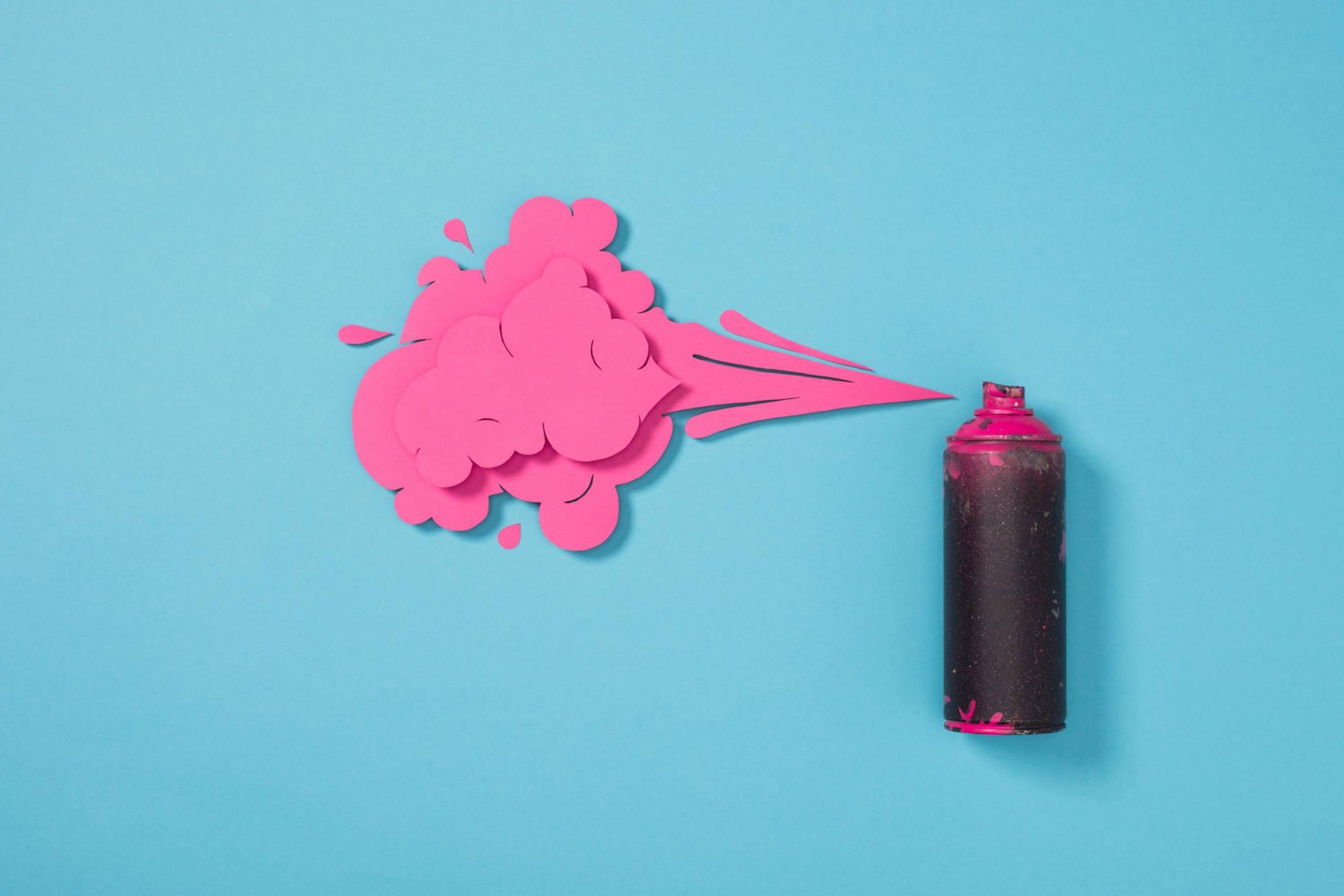
via VistaCreate
Where Enamel Paint Is Used?
Enamel paints are known for their high versatility. They can be used for many types of painting projects. And also, they can be applied to many surfaces where a glossy finish or a durable coating is needed.
Here is where you can use enamel paint:
- home appliances
- furniture
- doors
- stairs
- bathroom
- kitchen
- basement
and basically everywhere else you could think of! Another great thing about this paint is that enamel paint can be used on different surface materials. It will adhere well and look great on wood, glass, metal, concrete, and even ceramic!
Except for being highly versatile in terms of areas you can use it in and surfaces you can apply it to, enamel paint possesses many other pros and benefits, such as:
- Resistant to moisture and humidity
- Mildew resistance
- Resistant to temperature changes
- Resistant to corrosion
- Resistance to rust
- Ok with frequent washing
- Easy to apply
- Gives a more uniform and smoother finish
No wonder so many people choose this paint over all the other ones!
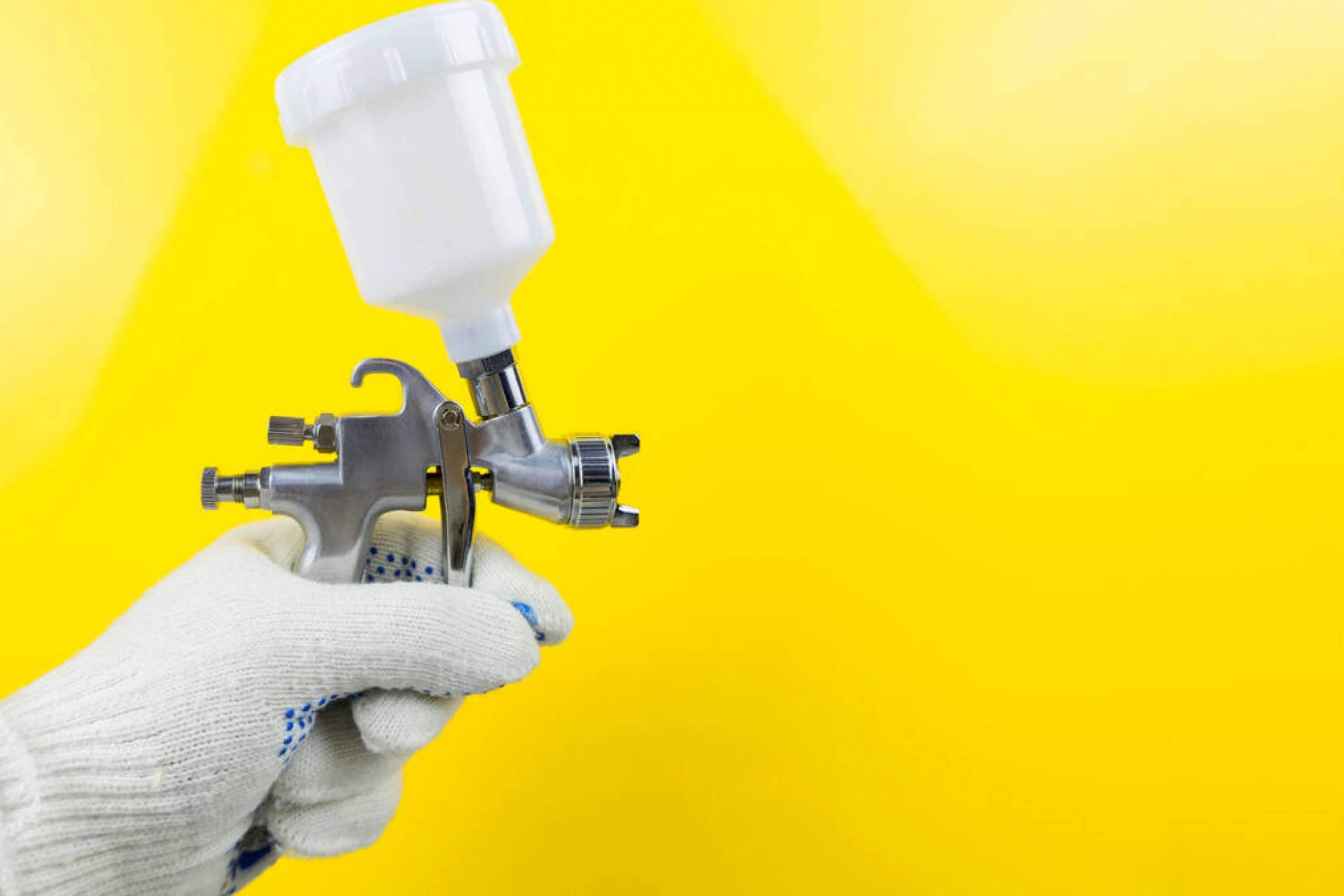
mihail39 via VistaCreate
So here you have it all! We have done what we promised: we explained in detail how you can thin enamel paint by using it with a spray gun. And also, you have additionally learned plenty of other useful information.
Now you know what makes this paint different from other paints on the market. You also know what types of enamel paint exist and why this paint should be thinned at all. Finally, you have learned what benefits it has.
With all that in mind, it will be easy for you now not only to thin this paint correctly but also to decide whether or not you are ready for using enamel paint in your home.
Ever wished paint sampling was as easy as sticking a sticker? Guess what? Now it is! Discover Samplize's unique Peel & Stick samples. Get started now and say goodbye to the old messy way!
Get paint samples




Frequently Asked Questions
⭐Can you thin enamel paint with water?
It depends on the type of paint. If you plan to thin enamel paint with water, make sure it is water-based. You cannot thin oil-based paints with water.
⭐Can enamel paint be thinned with lacquer thinner?
Lacquer thinner could produce an unattractive result if you dilute the paint with it. Also, it might not be safe to paint on plastic with lacquer thinner that contains acetone because it will damage the material.
⭐What is semi gloss enamel paint used for?
Thanks to its radiant appearance, it is great for adding color to cabinets, trim and indoor furniture.
12 thoughts on “How to Thin Enamel Paint For Spray Gun?”
Leave a Reply




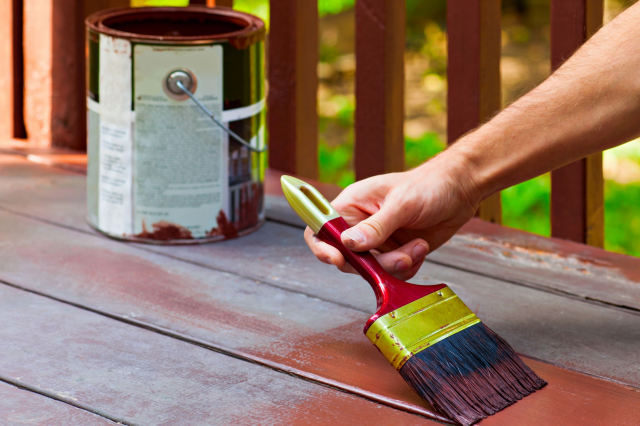



Hello. I have a question that I hope you’ll help me with. How to thin Behr enamel paint? Is there a universal scheme/ratio?
Hello. There is no fixed scheme or ratio. See, it depends on the type of paint you have. For example, Behr oil-based enamel needs no thinning.
Do you know how to thin enamel paint for brush? I couldn’t find any instruction on this subject.
Well, it’s not always necessary to thin it for brush in fact. See, if you are painting a large surface with a regular brush, you can use enamel paint without thinner. However, you should use a paint thinner if you use an airbrush since the paint should have a more fluid consistency.
Hi! Could you please recommend me the best thinner for enamel paint?
Hello. It’s pretty hard to think about only one product. The thinner you might want to use can depend on your budget, for example. But in general, you can try one of these: Methylated spirits, white spirits, turpentine, mineral spirits, acetone, lacquer thinner, and rubbing alcohol.
I need to thin enamel paint for my spray gun. Does anone know enamel paint thinner ratio for this purpose?
As far as I remember, you should follow the suggested enamel paint thinner ratio, which is 1/3 (one part solvent with three parts paint). But I’d recommend you test it afterward to see how it works.
Is enamel paint toxic? I want to try it so much because that glossy finish is absolutely awesome! But I do afraid that it might cause health issues.
Well, it is definitely not deadly since thousands of people use it and nobody reported deaths. Just joking! But in fact, this paint does contain chemicals, so it is the same as other paints. Nevertheless, I don’t think it has any danger in terms of health.
Does anyone know how to thin enamel for brushing? I heard that it gives the good consistency, but how effective is it?
Hi! Basically, you can thin the enamel paint for brushing, and yes, it does help to get the correct consistency. However, this thinning requires you to choose the proper thinner. If you use an airbrush, make sure the enamel paint is properly thinned. Also, ensure that you clean your airbrush gun after using enamel paint. If you don’t, you will end up with uneven spray patterns and clogged airbrushes.